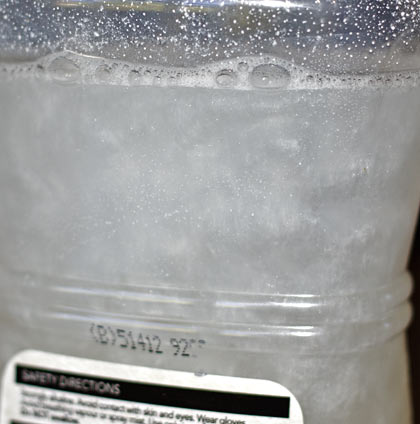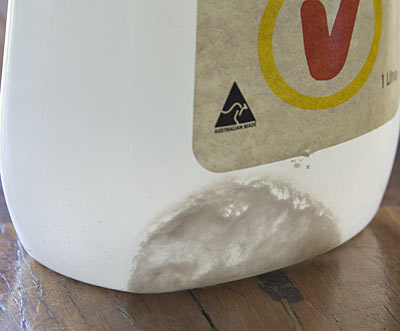A reader writes:
One of your recent posts got me thinking.
Everyone (or anyone who's ever had occasion to read any sort of scientific study), knows about the placebo effect. I'm curious as to whether the magnitude of said effect has ever been studied, in order to determine the extent to which placebo effect is an actual effect, or just the natural history of a disease (or whatever).
I'm thinking that a randomised, NON BLINDED study might be necessary.
Take a bunch of people with the same usually-harmless disease, say a simple cold, or something like Bell's palsy. Tell them that there's a trial of a new wonder drug to treat their condition, and would they enrol in said study. Tell some people that they are getting the 'drug', and tell the others they are getting placebo. Give everybody placebo.
If there's a significant difference between the two groups, then that would be an actual placebo effect (ie thinking you're going to get makes you get better), as opposed to things just getting better on their own.
Has something like this been done? Would there be any problem with it, other than the ethics of telling people they're in one study but actually studying something entirely different?
Ben
Yes, there have been some studies of this sort. Placebo hasn't achieved much.
It's popularly imagined that placebos can do all sorts of amazing things, just as adrenaline makes a tiny woman able to lift a crashed car off her baby, and acupuncture can be used for surgical anaesthesia.
None of these things are actually true.
The reason why the placebo-controlled trial is such a central tool of medical research is that placebos don't do much of anything. If placebo treatment really was effective for all sorts of things, then, one, doctors could save a lot of time and money by just giving patients placebos all the time, and, two, placebo response could be a confounding factor on the non-placebo side of placebo-controlled trials. There's nothing stopping someone from having a placebo response to a real treatment, on top of whatever the treatment itself does.
The reason why trials are placebo-controlled, rather, is so that they can be blinded properly - preventing at least the patients and preferably also the doctors from being able to tell whether they're administering the medicine or the placebo. Unblinded tests are terribly susceptible to all sorts of biases, and a number of practical problems as well, like for instance all of the subjects who discover they're not getting any medicine not bothering to turn up next week.
The placebo effect, insofar as actual empirical science has been able to quantify it, is a delusion. That's "delusion" in the technical psychological sense - a counterfactual belief. But if you're given a placebo as a treatment for pain, or anxiety, or depression, and it works, then you have a delusion that your illness is not as severe. Which, for all practical purposes, is the same as "real" medicine for conditions like this that're all about what you perceive and how you think, rather than empirically measurable phenomena.
This is not the case for most illnesses, though. If you're given a placebo treatment for diabetes, or cancer, or yellow fever, you may if you're particularly amenable to positive delusions sincerely and unshakably believe you're getting better. But you won't be. Just as some dangerously thin anorexic people can literally see a fat person when they look in the mirror, some people undergoing worthless treatment for, say, cancer, can literally feel the lump getting smaller. Until they die.
(The flip-side of this is the not-terribly-well-documented situation in which someone is given a "nocebo", something inert which they believe to be poison or black magic or what-have-you, and then develop real symptoms or even die. There's no very persuasive evidence that people who believe themselves poisoned or cursed in one way or another actually can "worry themselves to death", but it's uncontroversial that someone who sincerely believes themselves to be in a nonexistent deadly situation can worry themselves into a state requiring serious real medical treatment. Note that it doesn't count if the patient just has a fatal car accident while driving frantically to the hospital after, say, being bitten by a non-poisonous spider.)
To really tell how effective placebos are, you need to do a three-pronged study, with one group getting a treatment, one group getting a placebo, and a third group getting nothing at all, if you can persuade that last group to stick around. (Or you can do a two-pronged study with placebo and no-treatment, if you can get such a thing past your Ethics Committee.)
When people do this, testing placebo against nothing at all, there tends to be little difference, and no objectively measurable difference at all.
There are lots and lots of real individual clinical observations (as opposed to friend-of-a-friend stories) of placebos creating real physical changes in real diseases like irritable bowel syndrome, asthma, ulcers and quite a lot of other conditions. These changes are hard to pin down, though; they exhibit the same deadly weakness seen in claims of paranormal powers, in which the harder you look to see if the effect is real, the smaller it becomes.
Useful placebo effects are, at best, highly variable between patients. And, again, you can't really tell what's going on without running a pretty big study of one kind or another, testing placebo versus no treatment at all. This is ethically difficult, and probably not a great use of researchers' time, compared with trying to develop non-placebo treatments that work whether the patient believes in them or not.
I could continue to ramble on here, but I've really got nothing much more to say about placeboes than actual-medical-doctor Harriet Hall says in this excellent article.
(The title of this post is from this Onion article.)
Psycho Science is a regular feature here. Ask me your science questions, and I'll answer them. Probably.
And then commenters will, I hope, correct at least the most obvious flaws in my answer.



